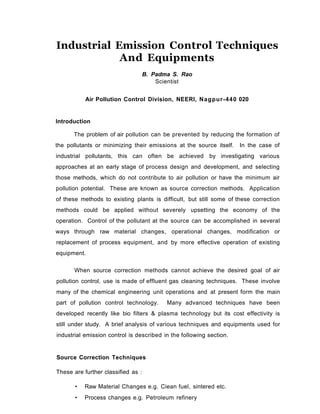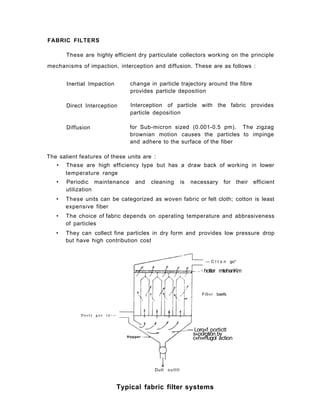This document provides an overview of industrial emission control techniques and equipment. It discusses source correction methods like raw material changes and process modifications that can reduce air pollutants. When pollutants cannot be controlled at the source, effluent gas cleaning techniques are used, including absorption, chemical alteration, and incineration. Common particulate and gaseous emission control methods and the mechanisms by which they work are described, such as cyclones, fabric filters, and electrostatic precipitators. Key factors in selecting appropriate control technologies are also summarized.

















